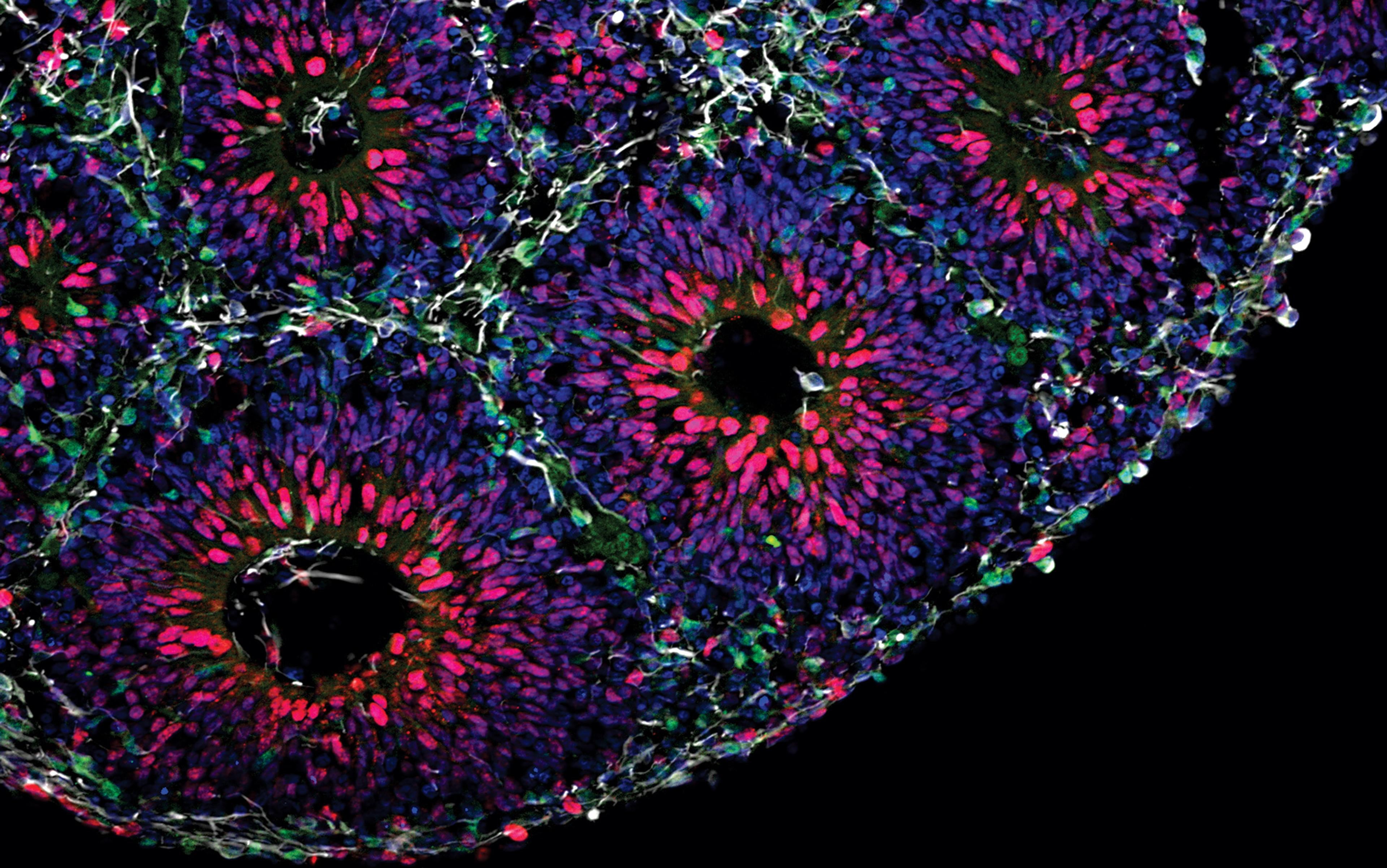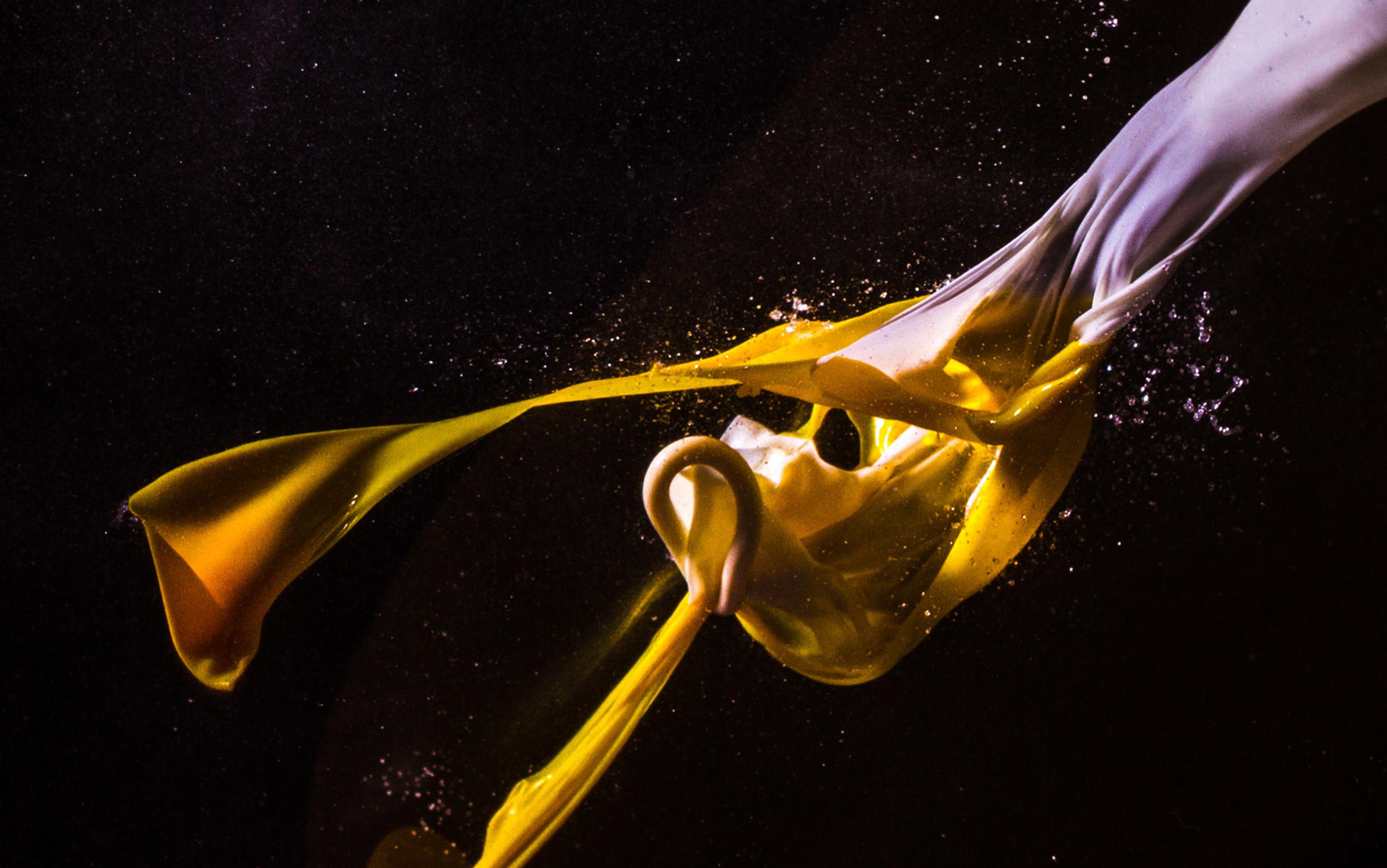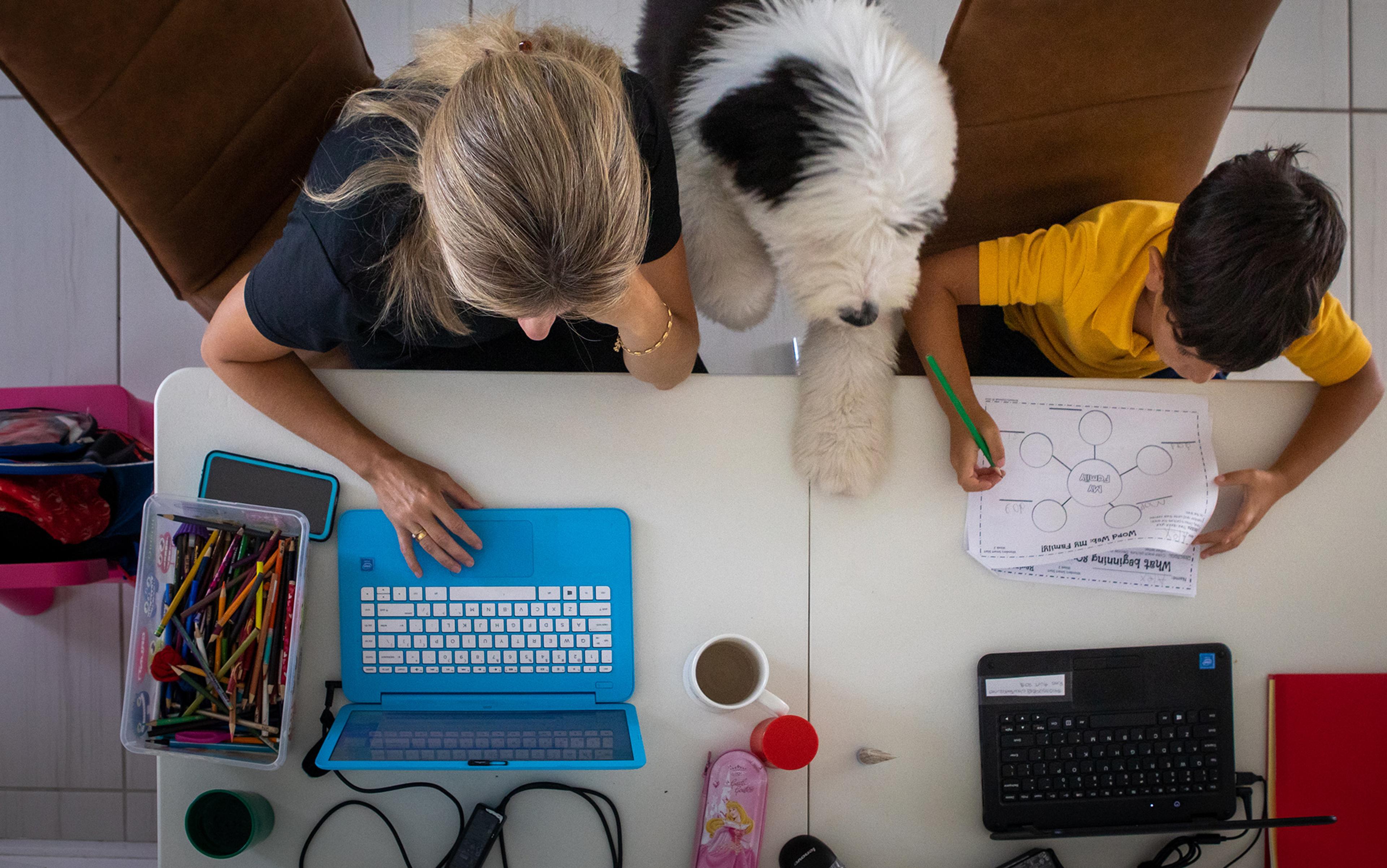Five years ago, in a new city and in search of a new hobby, I decided to try playing a musical instrument for the first time. I had never learned to read music; in my grade school, the optional orchestra class was offered at the same time as the optional robotics class, and I chose the latter. Understanding nothing about chords or music theory, I settled on the relatively simple mountain dulcimer, a three-stringed lap instrument from Appalachia.
I was proud of how quickly I picked it up. I could replicate many of the old-time fiddle tunes, Civil War ballads and Ozark folk songs my instructor played during demonstrations, and I learned to discern notes by ear. I was hardly a virtuoso, however, and after a few months I hit a plateau. I could hear how they were supposed to sound, but challenging, faster-tempo songs remained out of my grasp. Frustrated, I distinctly remember thinking: ‘If only I’d learned music as a kid, I might have been great at this.’
I haven’t played my dulcimer in several months, but the day might be coming when I could actually learn to play as I would had I learned during childhood. I might be able to swallow a pill that restores my brain to a more flexible, receptive state. This new, more childlike brain – rendered literally more ‘plastic’ because of its ability to forge many more connections between neurons – would enable me to learn far more readily each time I practised a tune.
Early childhood is characterised by a series of critical periods – circumscribed times when the brain opens up and changes profoundly in response to input from the environment as new skills are learned. During these times, the rapidly-morphing brain – an organ so malleable that neuroscientists call it ‘plastic’– sculpts itself into the perfect vehicle for navigating the world. During one critical period, for instance, children master specific visual skills. During another critical period, they master emotional control, and during another, language. When the brain opens up and becomes plastic too early or too late, circuits are laid down incorrectly and disorders like autism or schizophrenia may result, forever altering how we process the world. At no other point in our lives are we more primed to receive new information and put it to use than during the critical periods of early childhood. ‘Genius is no more than childhood recaptured at will,’ the French poet Charles Baudelaire wrote in 1863.
As we emerge from toddlerhood, our brains become less plastic and it becomes more difficult – sometimes even impossible – to learn new things, from movement to language to social behaviour. Even accented speech results from loss of plasticity in the brain; after adolescence, most people never lose an accent, no matter where they settle down in years to come.
It makes sense, of course, that the brain would ultimately settle down and put the brakes on its own, rapid-fire flux. If our minds were to keep changing at such frantic pace, we would never be able to perform the day-to-day business of survival: gathering food, sheltering from the elements, procreating and caring for our young.
There is an evolutionary reason for stabilising brain circuits after a period of rapid learning to adapt to the environment, notes Takao Hensch, a neuroscientist at Boston Children’s Hospital and Harvard University and an expert in brain plasticity. ‘If circuits are constantly changing in response to experience, then the brain becomes inefficient as a processing device.’ Stability is so important to the mature brain that it goes to great lengths to inhibit plasticity.
Yet learning in adulthood still occurs because the connections between neurons, called synapses, are still constantly adapting to the environment – though at a slower pace than before. With practice, adults can learn to play the dulcimer and speak many languages. And in times of need, the brain can ramp up plasticity: survivors of traumatic brain injury or stroke, for instance, can learn to walk and speak again as their brains fire up new synapses to replace the ones they lost. Rather than disappearing, it turns out, plasticity has merely been suppressed by a network of inhibitory neurons and the molecules that they use to communicate. Depending on circumstance, the brain can open up and become plastic again.
The possibility of reawakening our youthful, receptive brains has piqued a lot of interest among educators, therapists, and those in search of expanded experience or thought. I might be able to immerse myself in music lessons and absorb them more effectively. Others might disable the plasticity brakes before a trip abroad, quickly learning a new language. Still others might wish to tweak an imperfect golf swing. The implications are more profound for people with autism spectrum disorders, mental illness and physical disabilities: re‑opening critical periods could help us rebuild the physical structures of our brains, erasing bad connections and wiring them anew.
Among the first neuroscientists to track critical periods in the brain during the 1960s were David Hubel and Torsten Wiesel of Harvard. They knew that children born with cataracts could not see properly even after their cataracts were removed – but why?
To help answer the question, the researchers surgically altered newborn kittens by sewing one eye shut until the animals were fully grown. Without input from the closed eye, the cells in the visual cortex re-wired themselves to the open eye, endowing it with a property called ocular dominance; it was the eye that could see best. The eye that had been sewn shut, meanwhile, lost its ability to focus; it developed a permanent disability called amblyopia, or lazy eye.
The researchers later repeated a similar experiment with adult cats, getting different results: when sewn eyes were reopened, cells from the visual cortex went back to normal and responded to the eye they had been been dedicated to from birth. In these adult cats, both eyes ended up seeing equally well. They were different than children with cataracts and kittens with amblyopia, whose neural connections had been altered during a critical period of development, their brains forever changed. Since adult cats had their eyes sewn shut long past the point when brains were so plastic, their cells reverted to form.
Hubel and Wiesel, who collaborated for more than 25 years, won the 1981 Nobel Prize in Physiology or Medicine for their work and enormous insight. They also inspired the young Hensch, who changed his undergraduate major from computer science to neurobiology while a student at Harvard in the 1980s.
‘It was their work in the visual system that made this a biologically tractable question: how does experience shape the brain?’ Hensch says today.
When it came time to start his PhD, Hensch went to work at the University of California, San Francisco, where Michael Stryker was expanding on the the closed-eye experiments of Hubel and Wiesel. Looking at which eye dominated, where cells responded and whether or not amblyopia developed, the experimenters were able to determine whether the brain opened up into a critical period of high plasticity and rapid change – or whether the brain was barely responsive to new signals from the environment. In one experiment, published in 1988, Stryker gave kittens high doses of drugs that inhibited neural processing during critical periods of visual development and virtually eliminated brain plasticity. With plasticity turned off, neurons fired in response to the closed eye as well as the open one, and amblyopia did not result.
Hensch found another means of suppressing plasticity. He worked with a group of mice that produced no GABA, a neurotransmitter that inhibits plasticity in the brain. Mice without the GABA (and thus with heightened plasticity) wound up with amblyopia if their eyes were sewn shut before a critical period. But Hensch could rescue them with Valium, which can boost GABA (and inhibit plasticity) in the brain. Even if an eye was sewn shut, those mice did not develop lazy eye.
‘It was like flipping a switch,’ Hensch says today.
Hensch has since begun studying drugs that boost plasticity in the human brain. One possibility is the dementia drug donepezil, sold as Aricept, which promotes plasticity by boosting levels of the neurotransmitter acetylcholine. In a clinical trial at Boston Children’s Hospital, Hensch is giving the drug to children older than 10 who have lazy eye in hopes that extended plasticity will give the brain a chance to rewire correctly. ‘I think we are getting closer to the day that pills might be available to do this,’ Hensch says. ‘It’s not magic.’
The researchers are investigating plasticity treatments for enhancing musical skills, too. In 2014, Hensch and Allan Young, professor in mood disorders at King’s College, London, announced that valproate – used to treat epilepsy and bipolar disorder – can reopen the critical period for perfect pitch, which normally closes around ages four to six. There are no known cases of adults acquiring perfect pitch.
Hensch decided to test for the enhancement after hearing Diana Deutsch, a psychologist at the University of California, San Diego, report that perfect pitch had a critical period, much like language and other cognitive skills. He decided to use valproate because it belonged to a class of enzymes (the histone-deacetylase inhibitors) that helped adult mice establish perceptual preferences otherwise impossible to acquire after youth. What if valproate could help people acquire something as nuanced as pitch?
To find out, his team placed 24 male volunteers on either the drug or a placebo for 15 days and asked them to watch a 10-minute pitch training video daily in the final week. The participants taking valproate did significantly better than chance at learning pitch, while those given the dummy drug did not. ‘That suggests we’ve improved their musical ability. We’ve improved something that is related to the brain’s ability to learn, which should have been fixed,’ Young told me. ‘If we can replicate this, then we have the possibility of thinking, what else could this benefit?’
Could I learn perfect pitch too, and become a master dulcimer player? Hensch and Young say a pill could make this possible. But like amblyopia, music is simply one product of brain activity. Reopening critical periods could do far more than teach people to see from each eye or recognise stray musical notes – it might enable new treatments for developmental disorders, including autism.
Autistic children have difficulty processing input from a variety of senses at once. You can appreciate the dissonance between this combination of inputs when watching a foreign film that has been dubbed, Hensch says: ‘There’s always something weird about it. We have learned since early in life that the face should look a certain way when language sounds are being produced. On tasks like that, where two stimuli are combined, autistic kids don’t do as well.’
The reason for the dissonance appears to be mistimed critical periods during early development of the brain. To get a handle on what might be going on in humans, Hensch studied four different mouse models of autism, focusing on their impaired ability to integrate sound and touch. He traced the problem to impaired circuitry in the insula, a region deep within the cerebral cortex that is crucial for social development. The findings do indeed suggest missed timing for integrating multiple sensory inputs during a critical period of early development.
Neuroscientists still have a long way to go to understand the precise mechanisms involved in human autism spectrum disorders. But if we could identify risk factors for autism, and if we could identify the faulty trajectory in advance, ‘we could go in and try to correct the timing [so that the error never occurs]. If we miss that opportunity, we might be able to re‑open the [brain circuitry during the] critical period and give it a second chance [to form correctly],’ Hensch explains.
For those with physical injury, re‑opening neural networks might one day improve the chance of full recovery. Patients who lose function after a stroke, paralysis or other forms of neurological injury can often relearn tasks with intensive rehabilitation, in part because the brain is trying to repair itself through a period of heightened plasticity – a glimmer of what the brain did when you were very young. ‘The brakes go down. For a short period of time, it seems like there is an effort there to increase plasticity,’ Hensch says. ‘What we are aiming to do is extend that window, and judiciously pair it with training, so that maybe there’s an opportunity to restore function.’
One key player in learning turns out to be myelin, the fatty sheath that shores up and insulates nerve cells, helping them transmit electrical signals throughout the body and brain. In multiple sclerosis, for instance, inflammation breaks down the myelin, disrupting the normal flow of information and causing tremors, visual impairment and cognitive problems. Myelin forms in early life in the brains of mammals, produced by support cells called oligodendrocytes, and is present during the critical periods of development. Today researchers understand that myelin itself is plastic; it, too, can be generated and changed by experience.
That insight has brought about a quiet revolution in neuroscience. ‘Until 10 or 15 years ago, it was thought that once the brain was formed, that was it. You were born with a certain number of neurons, a certain number of glial cells, and the only thing that could happen is they would start to die on you,’ says William Richardson, who studies myelination and directs the Wolfson Institute for Biomedical Research at University College London. ‘You would have expected all of the myelin that you need to be formed early in development. Otherwise maybe the brain wouldn’t work right.’ But it turns out that oligodendrocytes continue to produce myelin for a very long time – in the life of a mouse for up to a year, well into adulthood. Suspecting myelin was involved in new memory formation, Richardson looked at mice and found that those without myelin-making cells were unable to navigate a complex running wheel with unevenly placed rungs. Those who were able to produce myelin learned it just fine. Those results were reported in Science in October 2014.
Would the replasticised brain be a neurological hard reset, a reversion to one’s original infantile self?
Myelin production might have benefits beyond movement, too. Decreased myelination is one of the most common pathologies in schizophrenics. Their illness could, according to Hensch, stem from the brain’s ability to turn off plasticity.
The ability to imbue the adult brain with some of its childlike wonder and flexibility would no doubt bring benefits, but would the replasticised brain come with risk? Would it amount to a neurological hard reset, a reversion to one’s original, immature, infantile self?
If the perfect pitch study offers a clue, these fears might be misplaced. Hensch says he was surprised by the study’s success, not only because the participants’ pitch skills changed, but also because those skills were nonetheless hard-earned. You actually need to train very hard to learn a skill, even with a critical period opened and plasticity at its height. ‘This lifting of the brakes offers an opportunity for new experiences to sculpt the brain but, just like kids, they don’t get it automatically. They have to work at it. So that was a relief,’ he says. Even with a highly plasticised brain, we must work very hard at mastering a skill or area of knowledge to gain expertise.
Perhaps critical periods can be pried back open because plastic, rather than static, is the default state of our brains. Though turning plasticity off might be required for stability, our evolutionary advantage lies in the very existence of lengthy critical periods. Human development takes an abnormally long time compared to other mammals – children are vulnerable and dependent on adult care far longer than the young of other species. But this is what allows us to learn. As our species evolves into the unknown future, it may be that lifelong learning supersedes physical survival as the means by which we prevail. Extended plasticity could be what our species needs most right now.
As I write, my first child is wriggling inside me, practising breathing motions in preparation for her arrival in two weeks’ time. From the moment she is born, she’ll have remarkable potential to learn; she is a tabula rasa ready to be etched by new experience.
‘We want to get back to the brain’s potential,’ Young told me, ‘the potential that your baby will have, and has now, and will have for the first few years of life.’
Someday, perhaps I will again have the potential to learn like my daughter. Maybe when she is an adult, drugs and therapies will grant her the ability to continually learn a skill – say, playing a musical instrument – as readily as she will for her first few years. But for her sake, I’ve started playing music for her already. I hope she will grow up learning tones and appreciating their infinite combinations in ways I never learned to do. I can at least give her the chance to do it right the first time.






